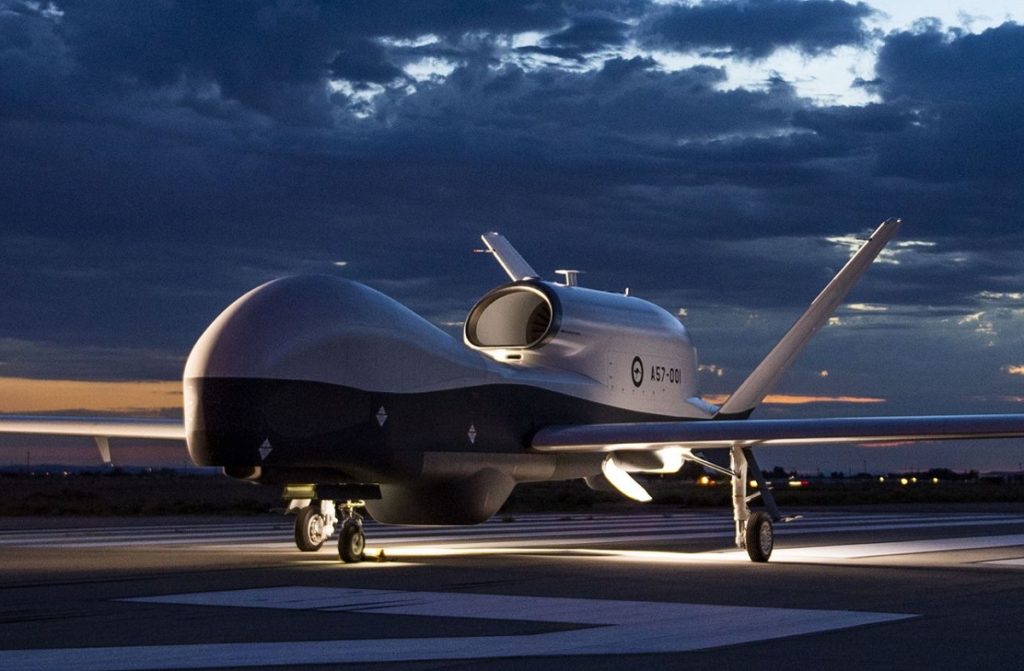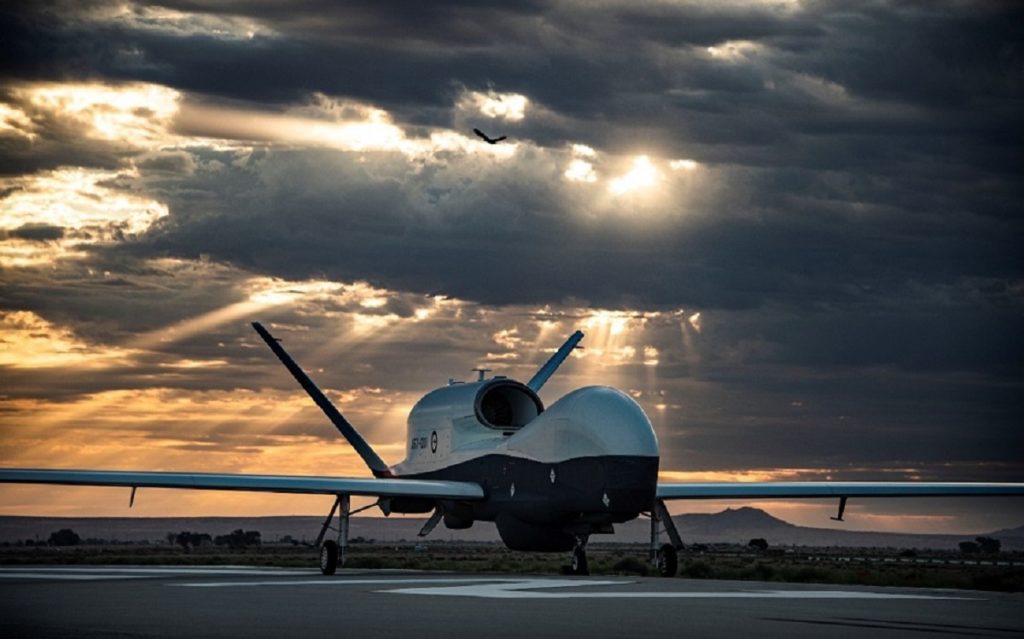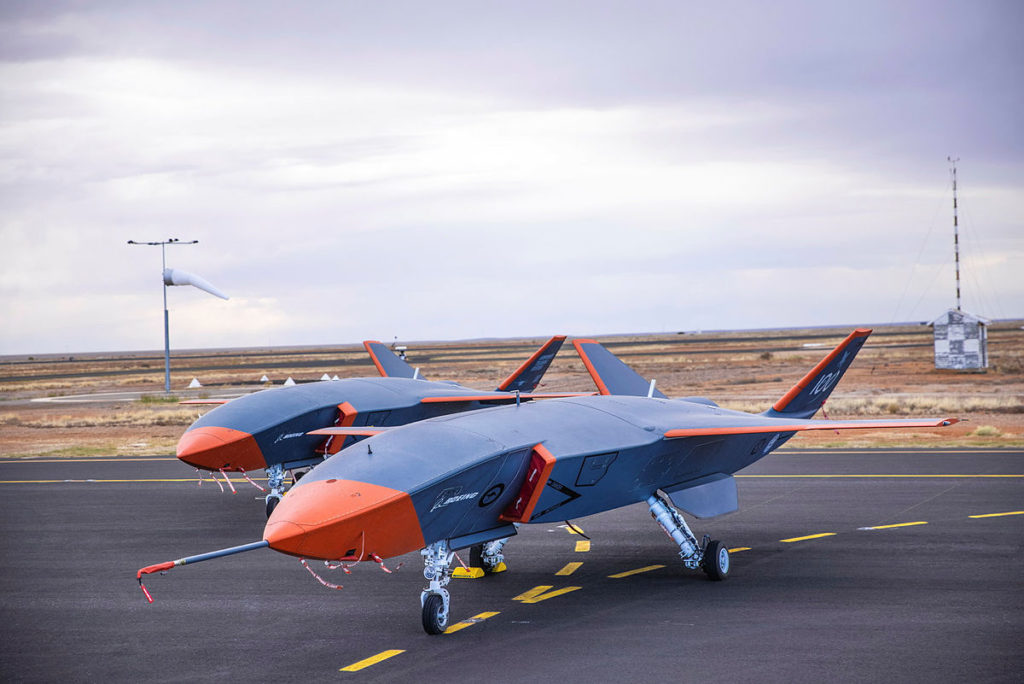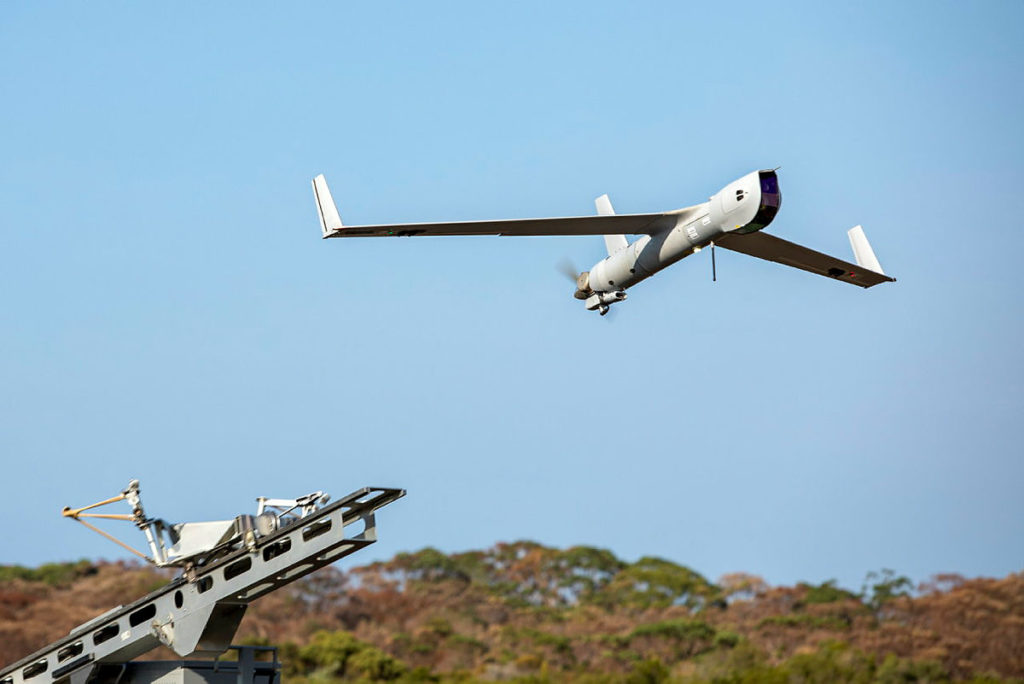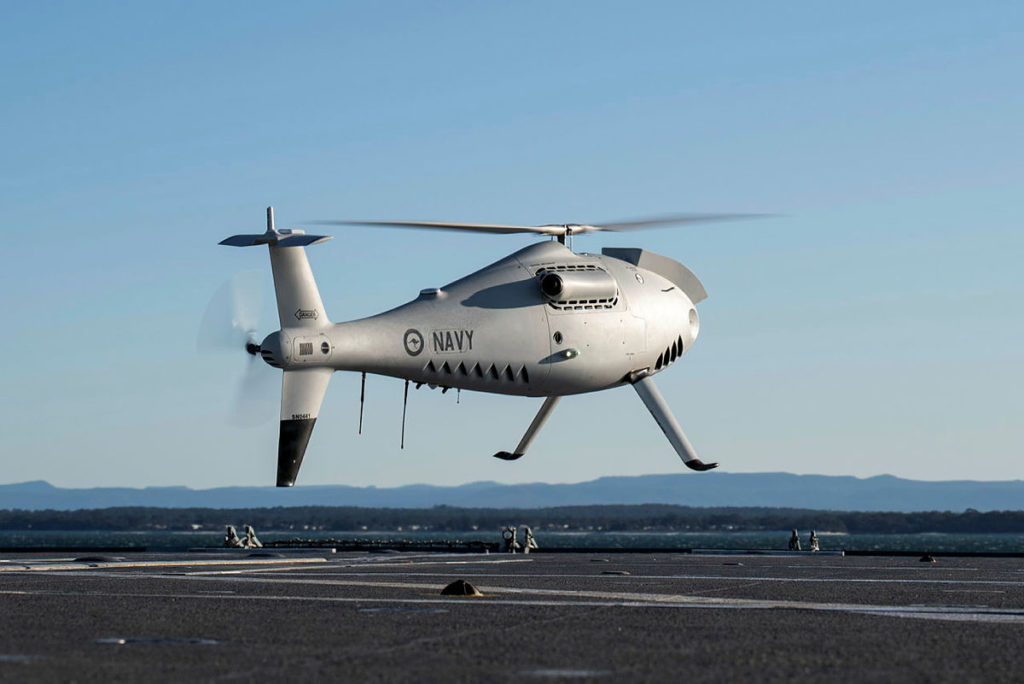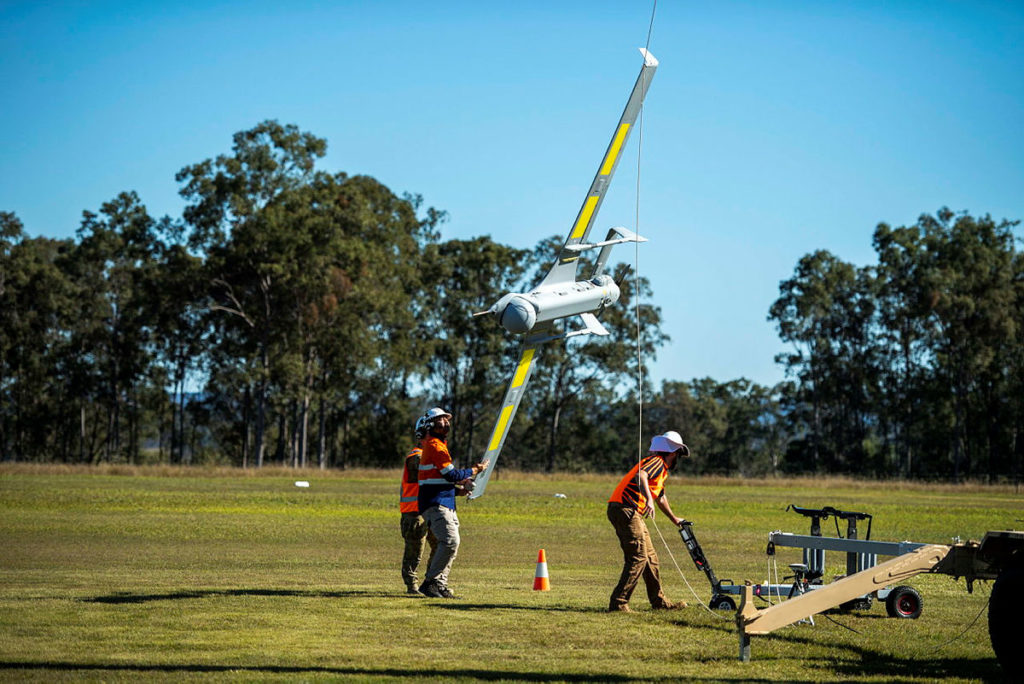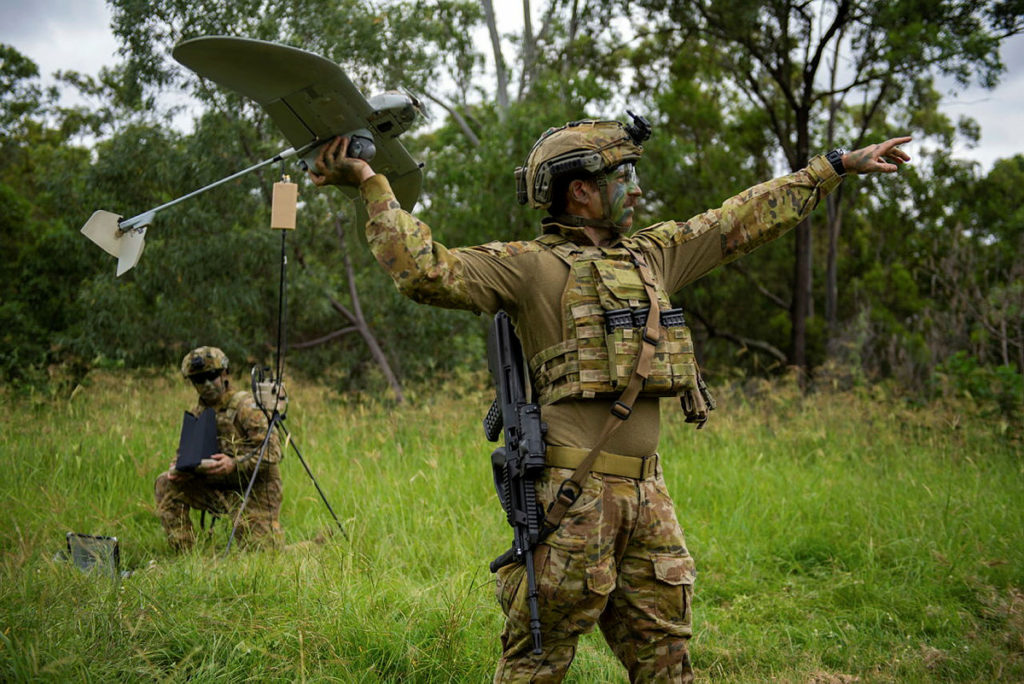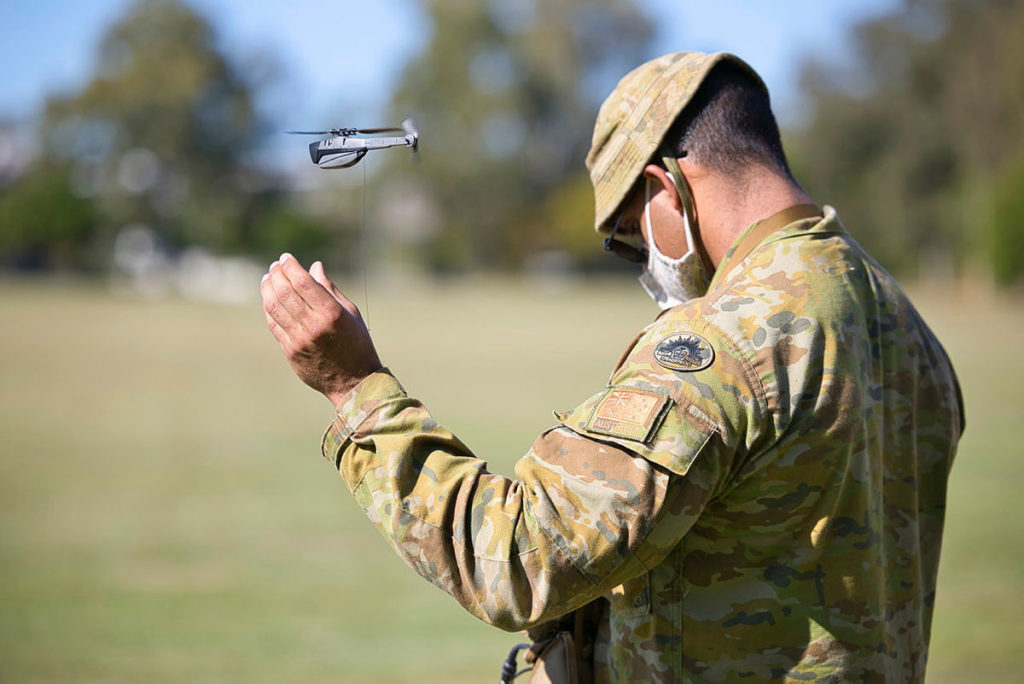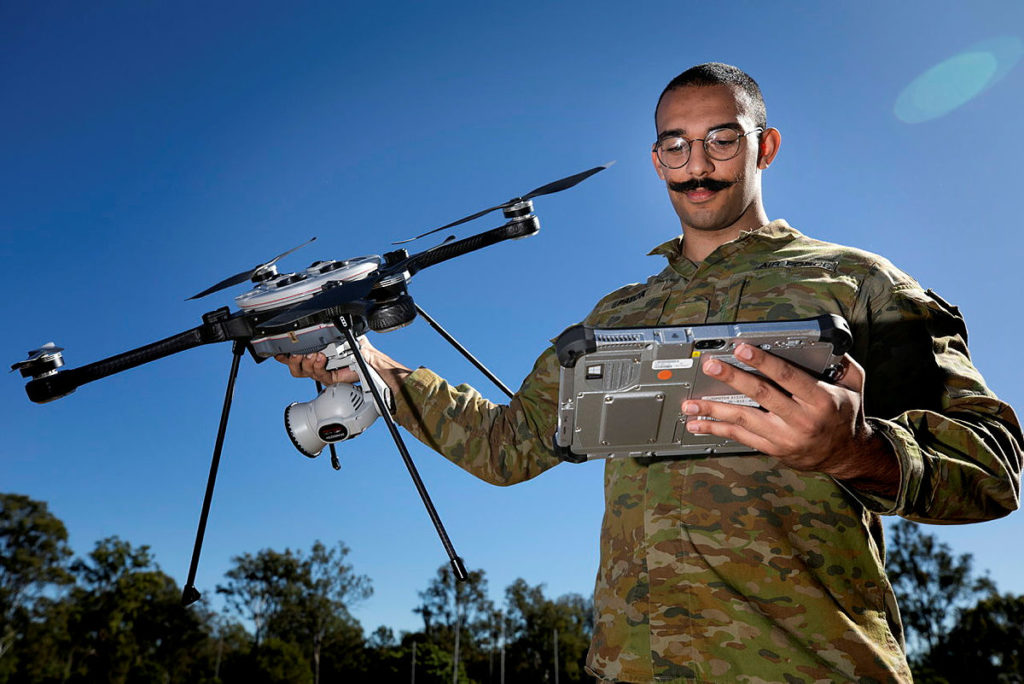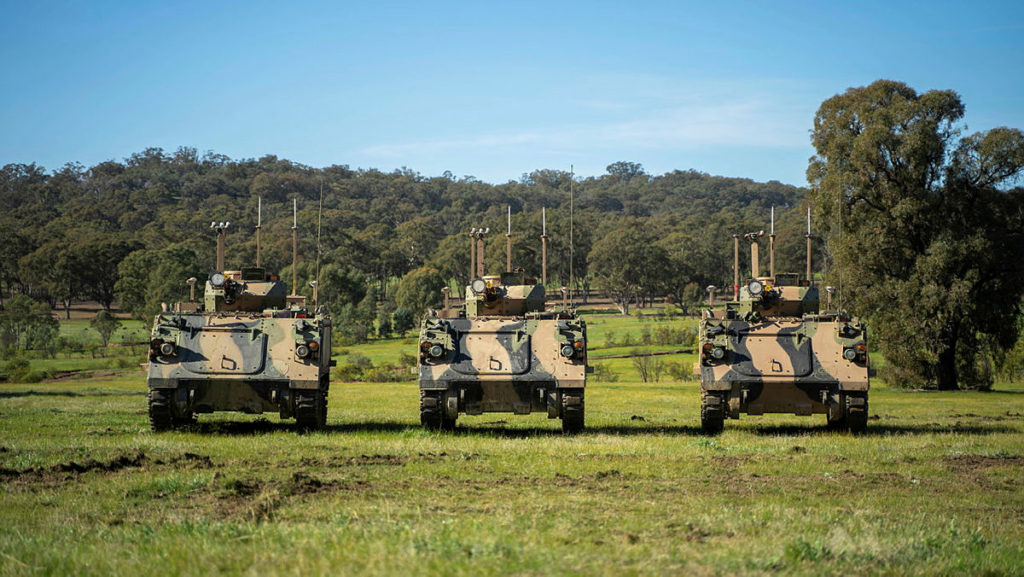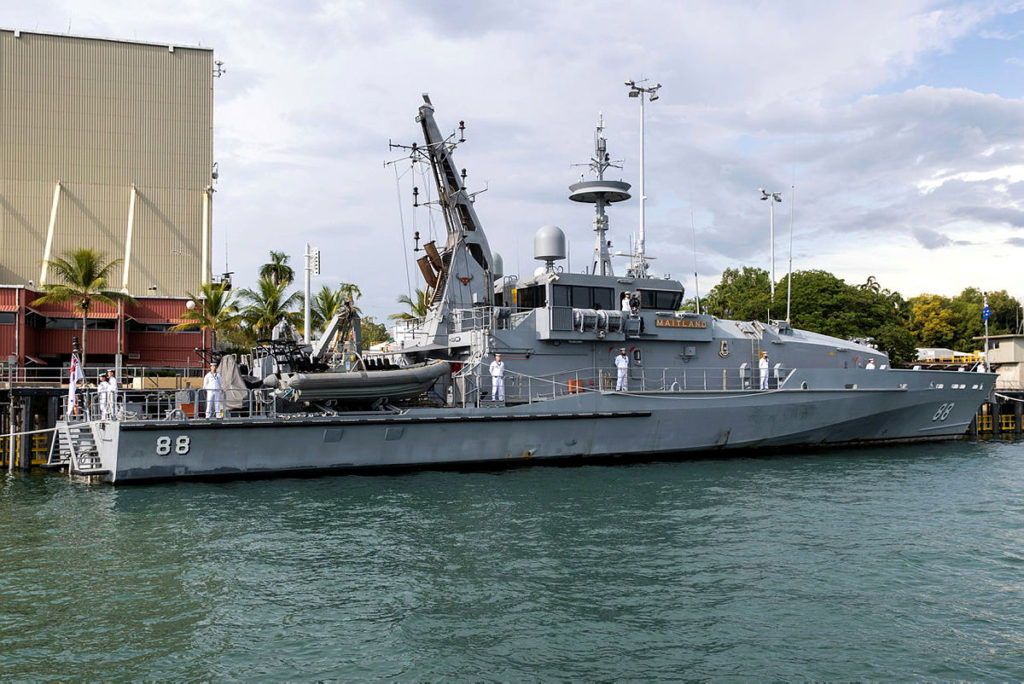The current war in Ukraine and recent conflicts in Nagorno-Karabakh and Syria have shown the increasing utility of armed and unarmed uncrewed systems in their ability to shorten the decision cycle and thus, the kill-chain. The ADF has several long-running uncrewed projects which will soon mature into operational capabilities, while other interim capabilities have entered and since left service.
AIR 7000 PHASE 1B
The ADF’s largest and longest-running uncrewed system finally hit a key milestone in September when the first Northrop Grumman MQ-4C Triton maritime UAS was rolled out at the company’s Palmdale facility in California.
The rollout was attended by various RAAF, US Navy, and Northrop Grumman officials, and precedes a planned first flight in 20203, and service entry from 2024. It followed the commencement of final assembly of the air vehicle at Palmdale in November 2020, and the wing-fuselage join in December 2021.
The RAAF has had a requirement for a high-altitude long-endurance (HALO) maritime UAS since the late 1990s, and has long partnered with Northrop Grumman, the USAF, and the US Navy on the Global Hawk and Triton programs, most recently, the development of the Triton’s comprehensive Multi-INT signals intelligence payload.
The Triton is a development of the RQ-4B Global Hawk, but features a stiffer wing, leading edge and intake de-icing, a sense & avoid sensor for uncrewed operations in controlled airspace, an AESA radar optimised for maritime ISR, and the Multi-INT sensor. Australia is a cooperative development partner on the Triton program with the US Navy.
But Australia has so far committed to buy just three Tritons under Project AIR 7000 Phase 1B, out of a requirement of six or seven air vehicles. It is likely the first two RAAF air vehicles will be co-located with US Navy Tritons at Anderson AFB on Guam while forward basing facilities are completed at RAAF Tindal, and certification efforts and procedures to fly the Triton through controlled airspace to RAAF Edinburgh near Adelaide are finalised.
AIR 7003
Designed to support deployed ground forces in an armed-ISR role in the land and littoral environments, the General Atomics MQ-9B SkyGuardian – an evolved version of the familiar MQ-9A Reaper – was selected for the RAAF’s Project AIR 7003 requirement in November 2019.
An RAAF officer was seconded to General Atomics in San Diego to work with the company and the UK’s Royal Air Force – which is the lead customer for the MQ-9B – on the SkyGuardian’s configuration, and the US State Department approved the sale of 12 air vehicles and a comprehensive sensor suite in April 2021.
But in April 2022 the project was suddenly cancelled, with the cancellation being revealed by a senior defence official under questioning in a Senate Estimates hearing. No reason for the cancellation has ever been publicly revealed.
Regardless, it is understood that the program may again be reconsidered under the new government’s Defence Strategic Review. The case can certainly be made following orders from both Japan and Taiwan who have both have ordered the MQ-9B and plan to integrate a maritime search radar to improve maritime surveillance in littoral regions.
DEF 6114
While the commonwealth had cooled on its interest in the SkyGuardian, it was pressing ahead with its investment in the Boeing MQ-28A Ghost Bat being developed under the former Project DEF6114 Loyal Wingman Advanced Development Program (LWADP).
To date, at least three Ghost Bat air vehicles have flown at the Woomera test Range in South Australia, while Boeing reportedly delivered an MQ-28 air vehicle to the US Air Force facility at Tonopah in Nevada in July for risk-reduction work for that service’s own Collaborative Combat Aircraft (CCA) programs.
Developed by Boeing Defence Australia and Phantom Works International and known within the company as the Airpower teaming System (ATS), the MQ-28 received it designation in March 2022. This followed its first flight a year earlier, and a series of successful flight envelope expansion flights in late 2021 which reportedly included two air vehicles flying together.
To date, the RAAF has so far committed to build six MQ-28s as it seeks to mature the aircraft design, develop payloads for the air vehicle’s detachable nose section, and refine the concepts of operation for the system.
NMP 1942
The Royal Australian Navy has also been developing an operational concept for uncrewed systems, albeit it at a much smaller scale that the Triton, SkyGuardian and Ghost Bat systems.
In 2015 the RAN stood up the Navy Minor Project (NMP) 1942 Maritime Tactical Unmanned Aircraft System – Interim Capability (MTUASIC), a program to develop operational concepts for a future ship-borne UAS capability that would come under Project SEA 129 Phase 5.
Under NMP 1942, the Navy has operated a small number of Schiebel S100 Camcopter VTUAS, and Insitu ScanEagle UAS by 822X SQN at Nowra. At least two operational ScanEagle deployments have been conducted, while the S100 has been gradually developed with the additional of a heavy-fuel engine and various new sensors.
SEA 129 PHASE 5
Project SEA 129 Phase 5 was sub-divided into two sub phases – Block I and Block II. Block I was to acquire a UAS capability for embarkation on Arafura class OPVs and ANZAC class frigates, while Block II would comprise a later buy of USS for the Hunter class frigates.
While the NMP1942 trial helped to define the requirements for SEA 129 Phase 5 Block I for an Invitation to Respond (ITR) to industry in March 2021, rather than proceed to a Request for Tender (RFT) as planned in early 2022, instead the Commonwealth announced it will make a sole-source acquisition of the S-100 Camcopter offered by a teaming of Raytheon Australia and Schiebel.
At this stage it is envisaged that at least a dozen S100s will be acquired.
LAND 129 PHASE 3
Almost in parallel with Navy’s SEA 129 process, Army has been running its own LAND 129 Phase 3 effort to replace the Textron Shadow 200 UAS in service.
A shortlist of the Textron Aerosonde V4/HQ and the Insitu Integrator was announced in late 2020, and in March 2022, the Integrator was announced as the preferred system to provide intelligence, surveillance, target acquisition, and reconnaissance (ISTAR) in support of land force operations.
Because Insitu Pacific already has a trials and training facility established at Coominya near Brisbane, it has been able to hit the ground running, so to speak, and commenced the first Army pilot’s course on the Integrator in June 2022. Twelve Army pilot candidates from 20 Regiment Army Aviation Command and the School of Artillery undertook the nine-week course which comprises classroom lessons and simulator pilot training, and practical Integrator flight training.
LAND 129 PHASE 4B
Another Army UAS project is the LAND 129 Phase 4B man-portable small UAS (SUAS) requirement to replace the Wasp III SUAS in Army service.
An RFT for the project was issued in January 2022 and closed in March. The RFT called for a SUAS capability that can provide an Army combat team with enhanced situational awareness and increased force protection by providing expanded reconnaissance and surveillance coverage of manoeuvre areas using a single trained operator.
The system will typically comprise an air vehicle, a ground control segment (GCS), operational support equipment, and training support equipment. The RFT also listed a requirement for remote viewing terminal for passive display of sensor data, adding this was “outside the system boundary of this project”.
A decision was scheduled to have been announced on the preferred system in the July-August timeframe, but may have been caught up in the government’s Defence Strategic review process.
MICRO UAS
Army also operates a micro UAS in the form of the FLIR Systems PD-100 Black Hornet Nano system.
Smaller than the palm of a hand, the Black Hornet was rolled out to Army units in 2017/88 following a successful trials program. Weighing just 18 grams, the 10cm long air vehicle has a range of about 2km and an endurance of about 25 minutes.
The ADF also operates a number of commercially available quadcopters such as various systems from DJI, and the Sky Ranger R70. These are used for at-height inspections of things such as aircraft tails or ship masts, or to provide situational awareness for base security forces.
OPTIONALLY-MANNED M113AS4
The Army has also taken delivery of a number of optionally-crewed M113AS4 armoured personnel carriers.
Retired from Army service and due to be replaced by new infantry fighting vehicles being procured under Project LAND 400 Phase 3, BAE Systems Australia has converted 20 M113AS4 as optionally crewed combat vehicles (OCCV).
Fitted with an Australian-developed vehicle management system that enables the vehicles to be operated autonomously, the M113AS4s will be used as part of a demonstration program to investigate the benefits of integrated autonomous technologies on future battlefields.
AUTONOMOUS ACPB
The Navy is also experimenting with an optionally-crewed surface vessel, in the form of the former HMAS Maitland – a retired Armidale class patrol boat – which has been converted to be able to sail autonomously under the Patrol Boat Autonomy Trial (PBAT).
The vessel was decommissioned in April 2022, and has had its weapons and other systems removed and its autonomous systems installed at Austal’s Henderson facility in WA. It is due to return to the water in 2023.
The post Industry Insight: ADF uncrewed systems update appeared first on ADBR.
